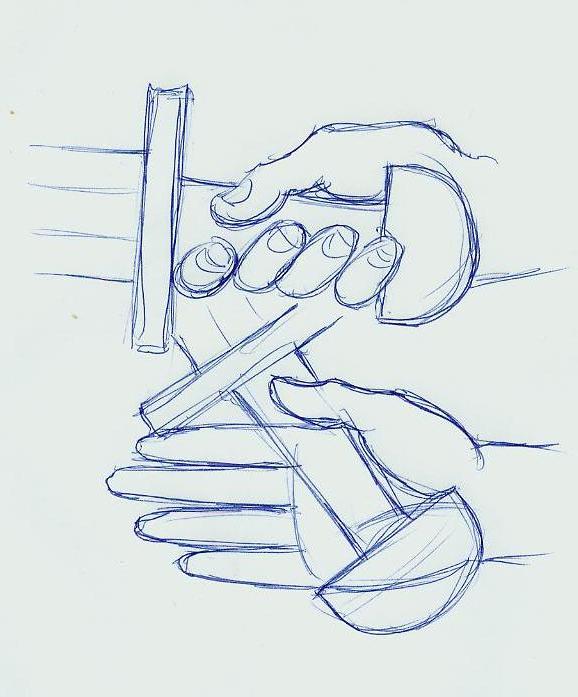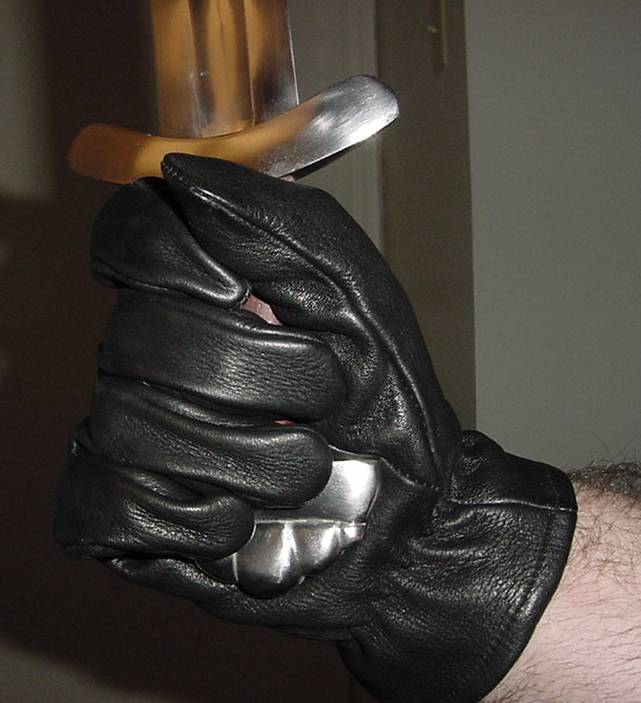(In response to Joel Thompson, sharing his experience with his Albion Clontarf sword and showing a photo of him cutting with it)
Hi Joel,
I am happy top see that you are putting the Clontarf to good use.
However, the way you are gripping the sword wil not bring out the best out of it.
It seems that the proper way to hold a viking sword is less than instantly intuitive. Many try to use a "hammer" style grip. This will unfortunately invite too firm a grip that will make the sword "dead" in the cut.
A sword must be held with a more supple and lively hand. No harder than a pleasantly firm handshake. As you hit the target you will make the grip more firm, but not cramping.
The shortness of viking era grips seems to mystify many contemporary students of the sword. The ever ongoing question seems to be why vikings had so small hands...(They did not)
(This is the same kind of question as "how sharp is a sword?": try to ansver the question: how shap is a 20th C pocketknife?...)
We need to understand the proper context and use of these weapons if we are to appreciate their real character and potential.
Swords from the iron age up to the viking period has as a rule pretty short grips. This is not because people were smaller, but because the mode of griping the sword and wielding it was different from what we often assume today.
One major thing is that the pommel was an active part of the grip, not just a way to top it off, or just for "counterbalancing" the blade.
I have attached a drawing (not a very good one I'm afraid...) attempting to show how a viking sword is supposed to be held. The lower one shows how the sword rests across your open palm and the top one shows roughly what it looksd like when you close your fingers arounbd the grip. You may still use a hammer grip in some situations, but that has a limiting effect on the performance of the sword. I think the hammer grip is used when only short chops in close mode is an option. In full length distance a more supple grip is used.
As the sword is swung towards a target it should move in your hand. This will increase cutting power remarcably.
The pommel is part of the grip. Descriptions telling you to finger the pommel is misleading, I think. It is more like the pommel resting inside your palm between the little finger and the fleshy part of your thumb. You might even imagine the pommel being the fulcrum around where the sword pivots during the cut.
The grip typically sit at an diagonal across your hand.
If your grip is now more supple you will notice how the sword becomes alive in your hand.
The movement, or "rotation" forwards of the grip in your hand as your arm swings towards and throught the line of your target is where the "secret" of the effective cut lies.
If you give a sword of viking type too long a grip it will actually make this way of working with the sword more difficult.
A shorter grip can strangely enough help overcome the tendency of the pommel to dig into your hand, but only when it is held the proper way.
Try this out and see how it fits you.
It is important to remember that cutting with a sword is very different from hitting with a hammer.
A hammer delivers as it hits the target, the sword will deliver as it passes *through* the target. It is all in the line that slants across and through the target and guiding the blade as freely and quickly as possible along this imagined line.
You will cut the best when you do not think too much about the target but more about how the sword arcs through the space around you. Imagine a perfectly flat plane that cuts across the target. When you manage to guide the sword along this plane quickly and precisely you will cut effortlessly.
But you need to use a supple grip, or this will not be possible.
Best of luck and happy cutting!

